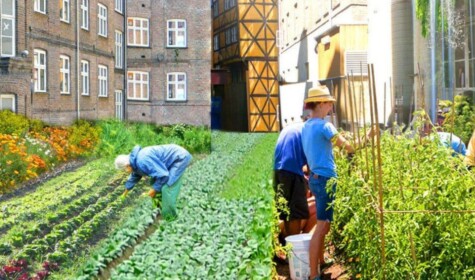This past June and August made the hottest summer in North American history, yet the increase in heat in the Pacific Northwest was especially shocking. The region, in between the Pacific shoreline and the Cascade Mountain Range, which extends North-South from Canada through Washington, Oregon and Northern California, is known for its cool, moist weather and its comfortable summers. The Pacific Northwest also includes a unique and remarkable biome of ancient cedar and hemlock rainforest that sits almost 700 kilometres from the coast. There is rich biodiversity throughout the valleys of the Columbia and Rocky Mountains which span across Washington, Idaho, Montana and British Columbia. The region’s northern latitude, with a cool coastal climate and mountainous elevations usually make it a refuge from heat, but this summer, the region realised hotter record temperatures than the Southwest of the United States, which is known for scorching summers and expansive deserts.
Based on where you are, what you’re used to and the resources you have to manage hot weather, the term ‘extreme heat’ describes a relative level of risk to human health. Excessive heat can cause the body heat stress, which is when the ambient temperature and level of humidity cause the body to be unable to cool itself down. From this, heat events cause more deaths than any other type of weather event and, respectively, heat is projected to be the leading cause of climate change related deaths. In spite of the mounting threats to health and quality of life posed by increasing heat from climate change, efforts have been slow to address risk factors associated with public health and heat stress-related morbidity and mortality. Most significantly among these risk factors is the urban environment.
The reason people in urban conurbations are at greatest risk for heat stress-related illness is, simply, that cities are often hotter than the surrounding countryside. The phenomenon is called an ‘urban heat island (UHI)’ and it has been well-documented since 1833. Yet, today, little research has aimed at identifying strategies to reduce urban heat and adapt to increasing average temperatures. The warming climate compounds the problem of UHI, and cooling temperatures down for urban livability and quality of life turns out to be a complex task. To address the problem, scientists are calling for mobilisation of expertise across professional sectors and policy areas – urban planning, housing, infrastructure, public health, emergency management and climatology. However, little attention has been given to the unique role that urban agriculture can play in addressing the twofold undertaking of living with global warming and extreme heat: heat mitigation and climate adaptation.
Urban agriculture provides a unique nature-based solution that could contribute to heat resilience and ‘marry the goals of both climate adaptation and mitigation’. Preserving and promoting urban agriculture has strong long-term potential to mitigate city heat by addressing root causes that relate to land use change, while also creating adaptive capacity for heat risk management.
Land use change in urban areas increases heat through a variety of factors and dynamics, and it is driven by growing populations. Hence, one of the reasons the Pacific Northwest is projected as an area that will be worst hit by increasing temperatures, is population growth. This projection follows trends from the past five years, which show that US states in the region gained people over twice as fast than elsewhere in the country.
Urbanisation and growing populations interact with the surrounding environment, geography and weather patterns to impact UHI. Other factors are involved with human activities such as a city’s historical infrastructure, types of building materials, amount of open space, vegetation, in addition to spatial patterns of development. In turn, these properties impact residents differently: based on an individual’s neighborhood environment, pre-existing health conditions, socioeconomic status, social networks, and cooling resources like home air conditioning, the threat of high temperatures may vary widely.
The ability to identify the factors and dynamics of urban heat sources, however, can lead to urban planning and design principles that mitigate heat. Among these strategies, the design fixture that is most important for reducing city heat, is plant life. One study on extreme heat planning, led by the University of Arizona’s Dr. Ladd Keith, found vegetation to be the most agreed upon heat mitigation strategy. This includes things like increasing urban green space with the creation of parks and planting native species of trees. The measurable difference greater vegetation makes within cities to ambient air temperatures is clear at a small, even neighbourhood, scale. Where more plants thrive, cooler temperatures follow.
For the sake of using the existing lexicon around heat mitigation strategies to address urban heat, the promotion and preservation of urban agriculture can be thought of as increasing ‘productive vegetation.’ Though vegetation is the most often cited strategy to reduce UHI, there is near complete silence when it comes to the potential for using urban agriculture toward the same end. Incorporating urban agriculture into any long-term heat mitigation plan can look differently, based on place and people. For example, the effort could aim toward preserving existing agriculture within cities or it could focus on the transformation of vacant or existing lots into new sites for agricultural production. Urban agriculture can perform all functions achieved by non-food producing plants – and then some.
More than just providing shade, all plants help dissolve heat in the atmosphere through a process called transpiration, which involves water evaporating from their leaves. Another way vegetation helps to mitigate heat, which can likewise be accomplished with urban agriculture, is by re-exposing soil. Often, land use change involves covering up the soil. This impacts UHI because building materials, such as concrete, stone or steel, have a high ‘heat capacity.’ High ‘heat capacity’ means the material stores more heat than it releases, which effects ambient air temperatures. On the other hand, soil and sand have low heat capacity. Designating space for urban agriculture can preserve soil or safely re-establish its exposure, which can improve the shedding of heat in an area of a city, as it also protects air circulation above the ground.
Air circulation is important for mitigating heat because wind functions to dissipate heat. Wind mixes the atmosphere and can move away hot air. While climate and weather patterns in a particular geographical location have large influence over air circulation, the shape made by city structures are influential because they can free or obstruct winds. Urban planners refer to ‘urban geometry’ when evaluating open air space between buildings that can facilitate wind flow. Like parks and other open spaces, urban agriculture can help mitigate heat by reducing stagnant air.
Where agriculture has the potential to meet multiple objectives for heat mitigation, it can also provide for heat adaptation. Adaptation refers to a community’s capacity to cope with existing levels of heat. This includes preventing heat stress-related public health emergencies through risk management as well as responding to them when they occur. Emergency preparedness involves establishing an appropriate medical response to heat related health events and activities like education about heat illness and how to identify heat stroke. Risk management, on the other hand, can include occupational health regulations for at-risk construction workers or the creation of ‘cool spaces.’ In the absence of medical emergency, a neighbourhood green space can function as a cool space for the people that live there by providing shade and air circulation on very hot days. Neighbourhood parks or community-based farms can fill the role of a non-emergency cool space.
Urban agriculture can build adaptive capacity for managing existing heat, and at the same time, it meets the long-term goals of mitigating heat by changing important root sources of UHI, both of which, could make a difference for health and quality of life. Finally, above and beyond these heat resilience goals, prioritising food producing plants and trees comprise the many benefits of local agriculture. If there is concern about a trade-off between water conservation and increasing urban vegetation for heat mitigation, urban agriculture – by contrast – expands mutual gains: farms and community gardens create a hub for the community and provide education and, of course, healthy, nutritious food.
While there is no easy panacea for responding to global warming, UHI and urban vulnerability to increasing temperatures, there must remain ongoing innovation, trials and re-invention. Professionals across many sectors should make a place at the table for urban agriculture to address ways in which it can help meet heat mitigation and resilience goals.



